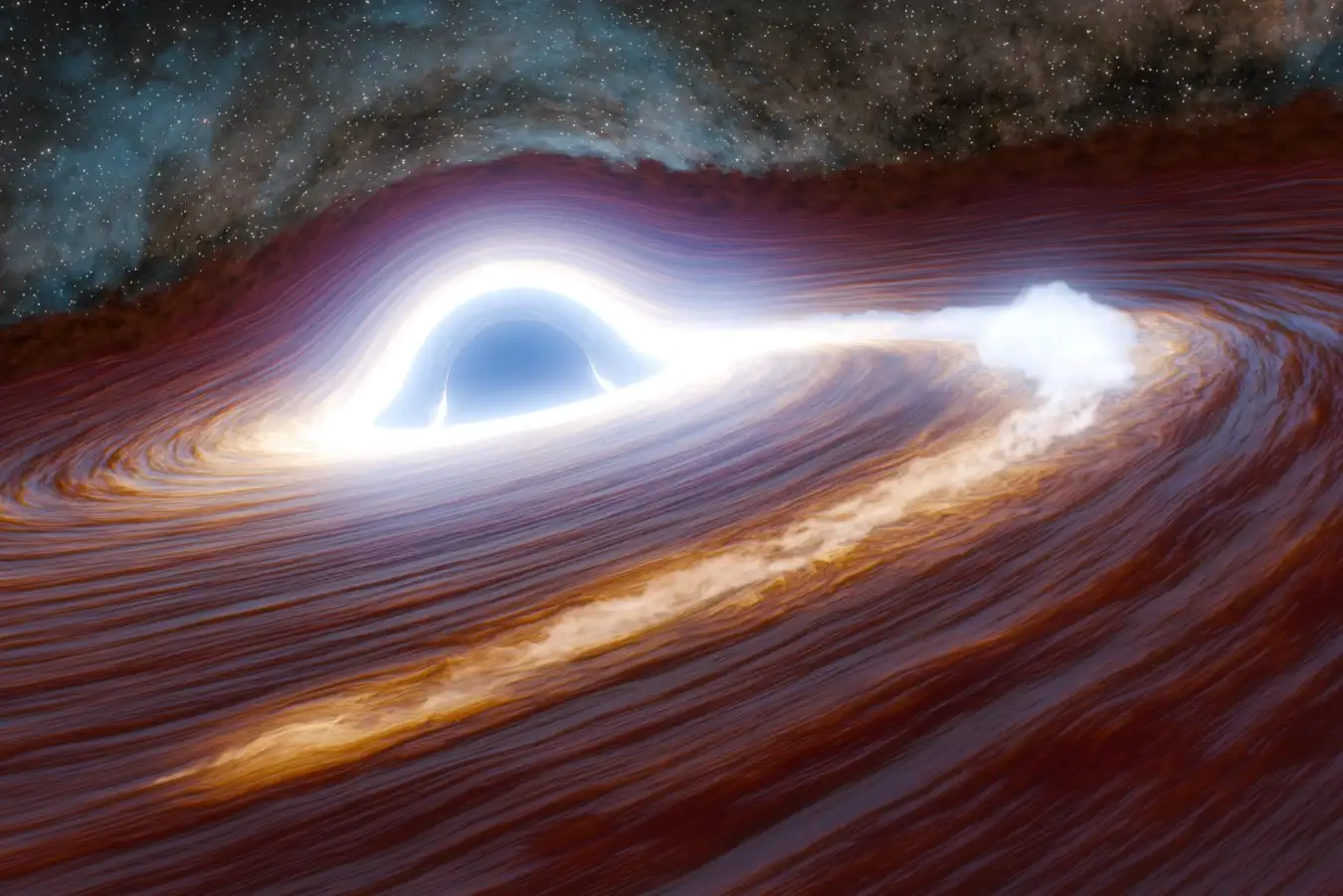
A supermassive black hole in the process of shredding an enormous star
Caltech/R. Hurt (IPAC)
Astronomers have spotted the brightest flare we have ever seen coming from a supermassive black hole. The flare was so powerful it can only have come from a huge star being ripped apart at the centre of a distant galaxy in what is called a tidal disruption event (TDE), releasing an extraordinary burst of energy that still hasn’t completely faded.
The flare came from an active galactic nucleus (AGN) – a supermassive black hole at the centre of a galaxy that is actively consuming matter – nearly 20 billion light years away, making it one of the most distant TDEs ever detected. In fact, we haven’t discovered many of these tidal disruption events in AGNs at all, because the intrinsic changes in brightness near active black holes make it difficult to tell if a flare is a TDE, or something else.
“We’ve known what AGNs are for about 60 years, and we knew that they were very variable, but we didn’t understand the variability,” says Matthew Graham at the California Institute of Technology. “Now we have millions of AGN and we still don’t understand the variability.” This event, nicknamed “Superman” for its incredible brightness and power, could help demystify these cosmic objects.
Superman was first spotted in 2018, but with no way of measuring its distance from Earth, astronomers assumed it was simply a bright but not unexpected burst from a relatively nearby galaxy. It wasn’t until 2023 that follow-up observations revealed the flare was much more distant, making its intrinsic brightness far higher than researchers initially thought.
The initial flare brightened the AGN by more than a factor of 40, making it 30 times as powerful as the previous strongest flare ever seen from an AGN. Graham and his colleagues found the most likely cause by far was a massive star being ripped apart: one at least 30 times the mass of the sun, but possibly much bigger.
In the area around every active supermassive black hole is a ring of material in the process of falling in, called an accretion disc. The density of material in that area should produce huge stars, but we have never seen them directly. “If our interpretation is correct that this is a TDE, then it is proving the existence of these massive stars in that environment, which we have suspected,” says Graham.
“We used to think that an active supermassive black hole would just have its disc of gas and it would sit there and burble along. But it’s a much more vibrant and dynamic environment,” he says. Studying Superman as it continues to fade could help us understand that environment more deeply.
It could also enable us to build a model of TDEs in AGNs that we could use to search for more. “Often if we see that a TDE appears to be in one of these AGN hosts, we don’t really know if this is just the active galactic nucleus acting up or if we really have a TDE, so it’s really great to have something that’s not ambiguous in that way,” says Vivienne Baldassare at Washington State University. “This will be really important for trying to find future TDEs and untangle different sources of variability in AGNs.”
Topics:
Source link : https://www.newscientist.com/article/2502676-brightest-black-hole-flare-ever-caused-by-huge-star-being-ripped-apart/?utm_campaign=RSS%7CNSNS&utm_source=NSNS&utm_medium=RSS&utm_content=home
Author :
Publish date : 2025-11-04 10:00:00
Copyright for syndicated content belongs to the linked Source.